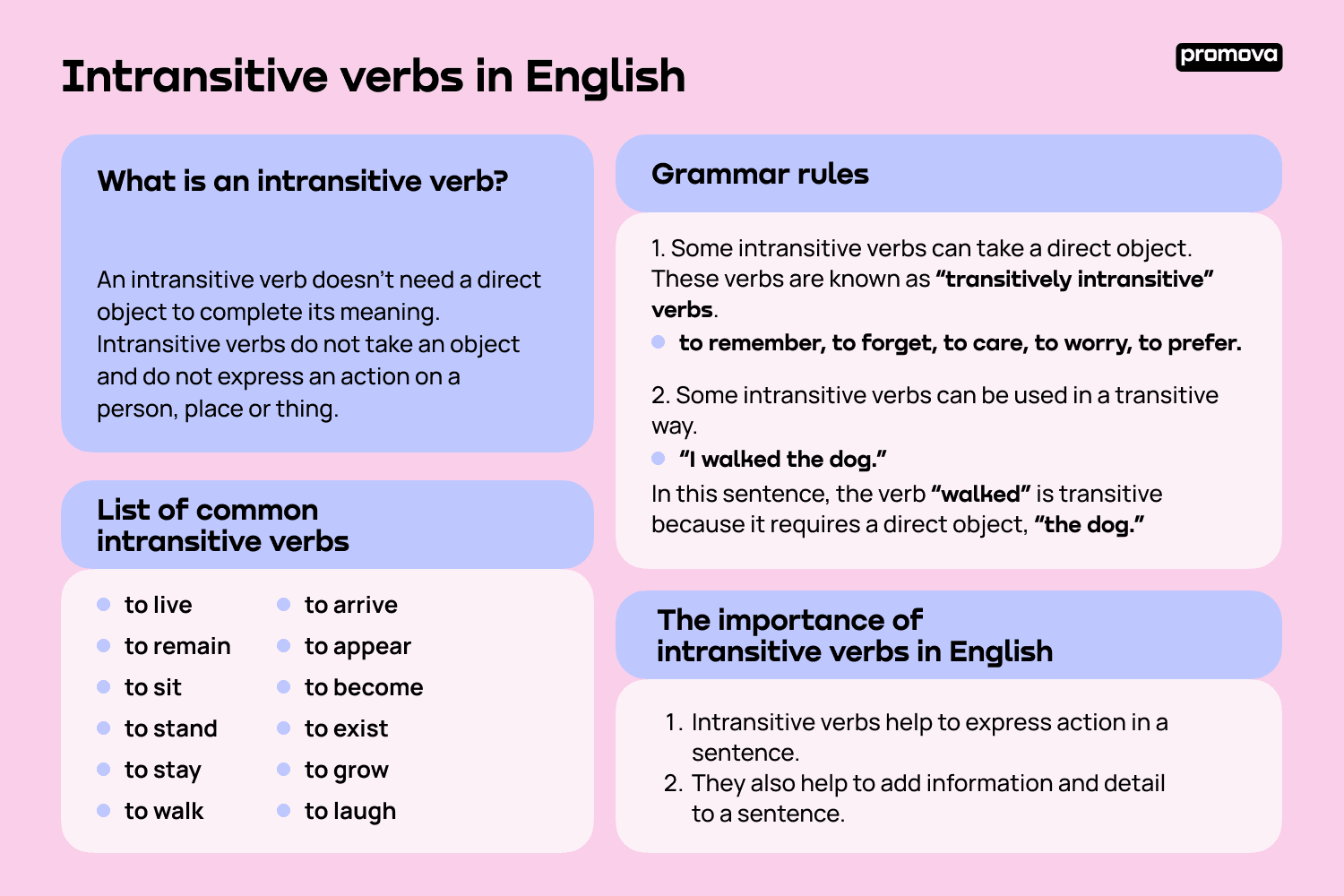When learning English grammar, one concept that often confuses learners is the difference between transitive and intransitive verbs. Understanding this difference is crucial for constructing clear and concise sentences. Transitive and intransitive verbs play different roles in a sentence, and knowing how to identify them can help improve your writing skills.
Transitive verbs require a direct object to complete their meaning, while intransitive verbs do not. This distinction is important in understanding the structure of a sentence and how different elements work together to convey a message. By recognizing transitive and intransitive examples, you can enhance your command of the English language.
Transitive vs Intransitive Examples
Let’s explore some examples to illustrate the difference between transitive and intransitive verbs. In the sentence “She ate the apple,” the verb “ate” is transitive because it requires a direct object (“the apple”) to complete the action. Without the direct object, the sentence would be incomplete.
On the other hand, in the sentence “He slept peacefully,” the verb “slept” is intransitive because it does not require a direct object. The action of sleeping is complete on its own, and adding a direct object is unnecessary to convey the message.
Another example of a transitive verb is “They built a house.” In this sentence, the verb “built” requires a direct object (“a house”) to show what was constructed. Without the direct object, the sentence lacks clarity and does not make sense.
Conversely, in the sentence “The flowers bloomed beautifully,” the verb “bloomed” is intransitive because it does not need a direct object to complete the action. The flowers are the subject of the sentence, and the verb describes their action without requiring an additional object.
Understanding the difference between transitive and intransitive verbs can help you construct grammatically correct sentences and communicate effectively. By recognizing examples of each type of verb, you can improve your writing skills and enhance your overall language proficiency.
In conclusion, transitive and intransitive verbs serve distinct purposes in English grammar. By identifying examples of both types of verbs, you can strengthen your understanding of sentence structure and improve your writing. Practice using transitive and intransitive verbs in sentences to sharpen your language skills and convey your ideas more clearly.
